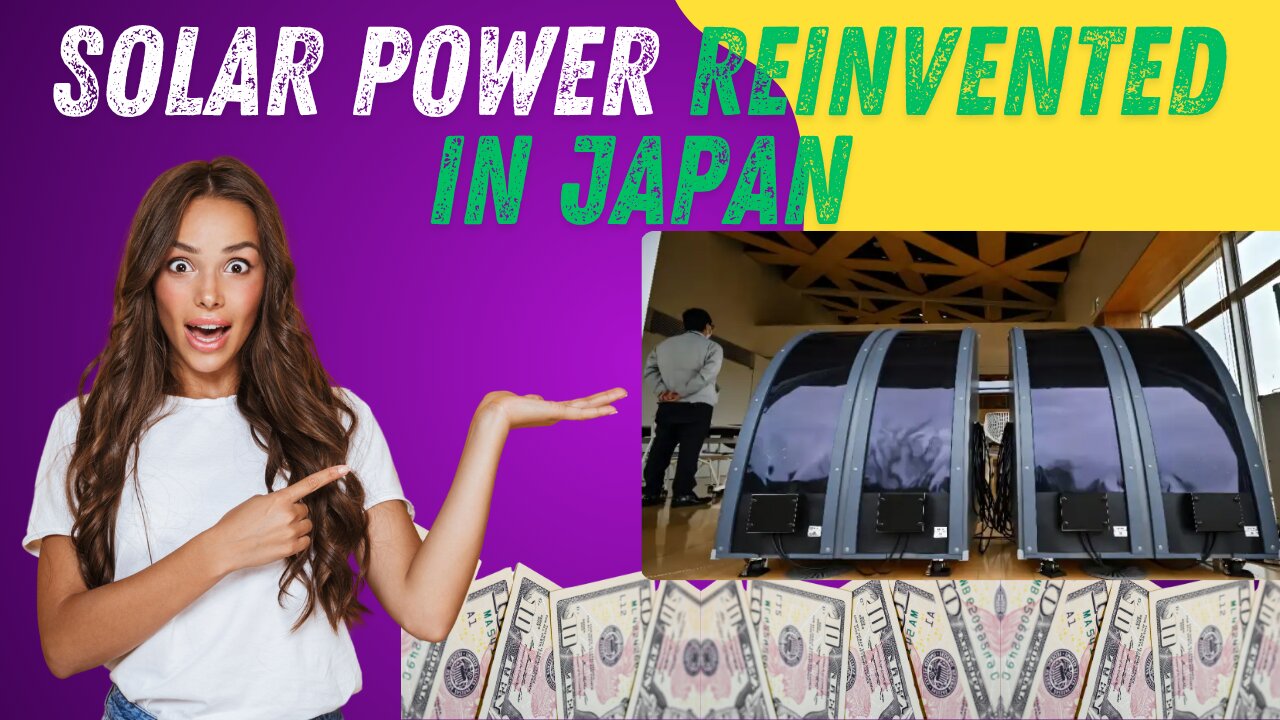Premium Only Content

Japan Is Generating Nuclear-Level Power Using Ultra-Thin Solar Films?
In a bold move to challenge China’s solar dominance, Japan is betting $1.5 billion on perovskite-based solar panels just 1 mm thick—flexible, ultra-light, and deployable on buildings, stadium domes, and curved surfaces.
🔍 **What you’ll discover in this video:**
1. Why perovskite panels are a game‑changer: flimsy, flexible, and ten times lighter than silicon cells, perfect for Japan’s mountainous terrain.
2. Japan’s ambitious goal: by 2040, roll out enough panels to generate 20 GW—equal to 20 nuclear power plants’ capacity.
3. Government support: a ¥157 billion (~$1B) subsidy to Sekisui Chemical for 100 MW production by 2027, powering 30,000 homes.
4. Challenges: lead toxicity, shorter lifespans (~10 years vs silicon’s 30), and current efficiency gaps. But prototypes at Tokyo City University have achieved 26.5% efficiency, nearly matching silicon.
5. Strategic edge: using domestically abundant iodine, Japan aims to reduce reliance on China’s solar supply chain.
🚀 These panels pave the way for buildings, vehicles, and curved structures to generate clean energy—boosting Japan’s green ambitions and energy independence.
👍 Like, Comment below: Where would you put solar film? Subscribe for more tech insight into the future of renewable energy.
---
🔖 Hashtags
#PerovskiteSolar #SolarRevolution #JapanTech #RenewableEnergy #CleanPower #EnergySecurity #FlexibleSolar #ScienceExplained #GreenTech
-
 19:04
19:04
putther
2 days agoTrolling a Level 7981 With My CHERNOBOG on GTA Online!
25.1K2 -
 26:17
26:17
Coin Stories with Natalie Brunell
19 hours agoInside Strive’s Bold Bitcoin Acquisition of Semler Scientific
26.3K1 -
 2:26:57
2:26:57
The Robert Scott Bell Show
19 hours agoTrump Autism Announcment, NYC Fluoride Ban, EMF Concerns, Kimmel Returns (Sort of), Plastics & Childhood Disease - The RSB Show 9-23-25
12.5K8 -
 9:33
9:33
Dr Disrespect
5 days agoDoc Goes PSYCHOTIC
133K15 -
 11:22
11:22
Nikko Ortiz
1 day agoExpensive Military Fails
10.3K5 -
 41:10
41:10
The Connect: With Johnny Mitchell
3 days ago $4.18 earnedInside The Sinaloa Cartel's Fight For Survival: How Mexico's Oldest Cartel Is Making It's Last Stand
14.5K10 -
 5:43
5:43
GritsGG
13 hours agoBest Way To Get Specialist EVERY Game!
15.4K1 -
 1:44:47
1:44:47
Side Scrollers Podcast
20 hours agoKimmel RETURNS + Twitch University + More! | Side Scrollers
41K4 -
 13:19
13:19
The Pascal Show
19 hours ago $1.02 earnedCOMEBACK DERAILED! Jimmy Kimmel's Return To Late Night Hit After ABC Affiliates REFUSE To Air Show
12.5K16 -
 LIVE
LIVE
Lofi Girl
2 years agoSynthwave Radio 🌌 - beats to chill/game to
323 watching